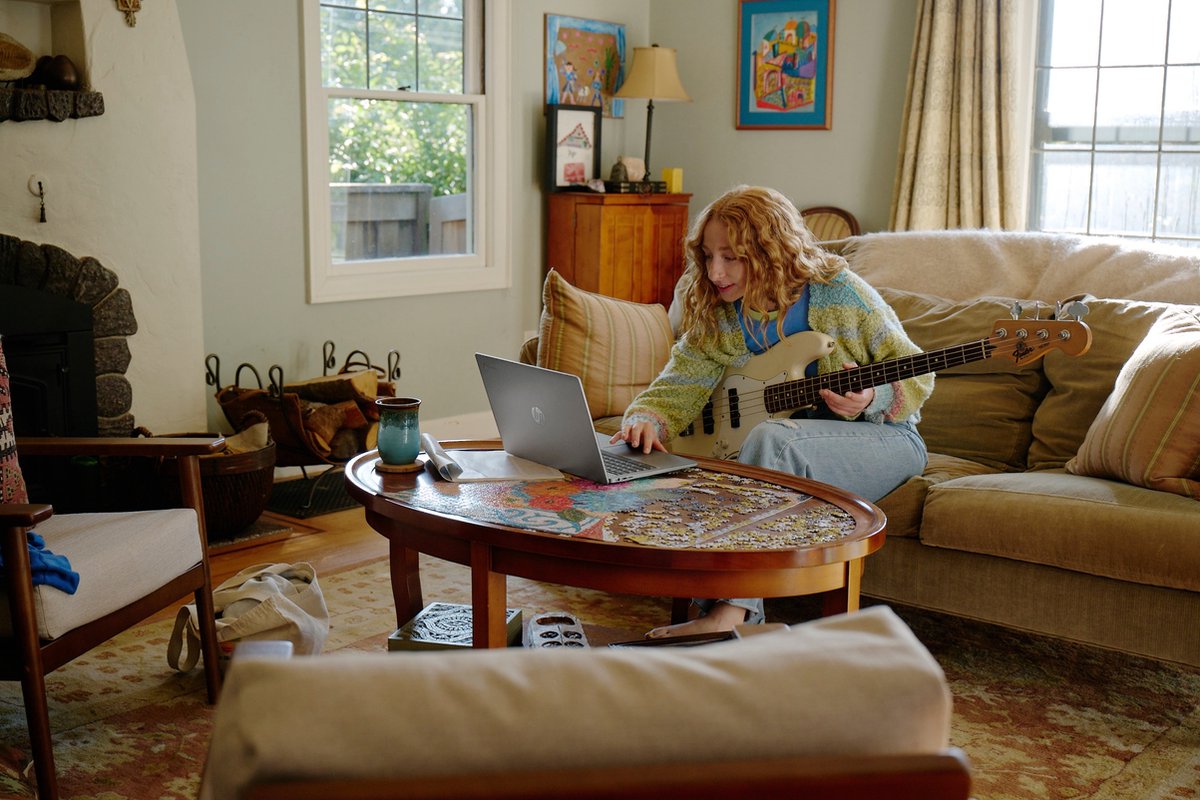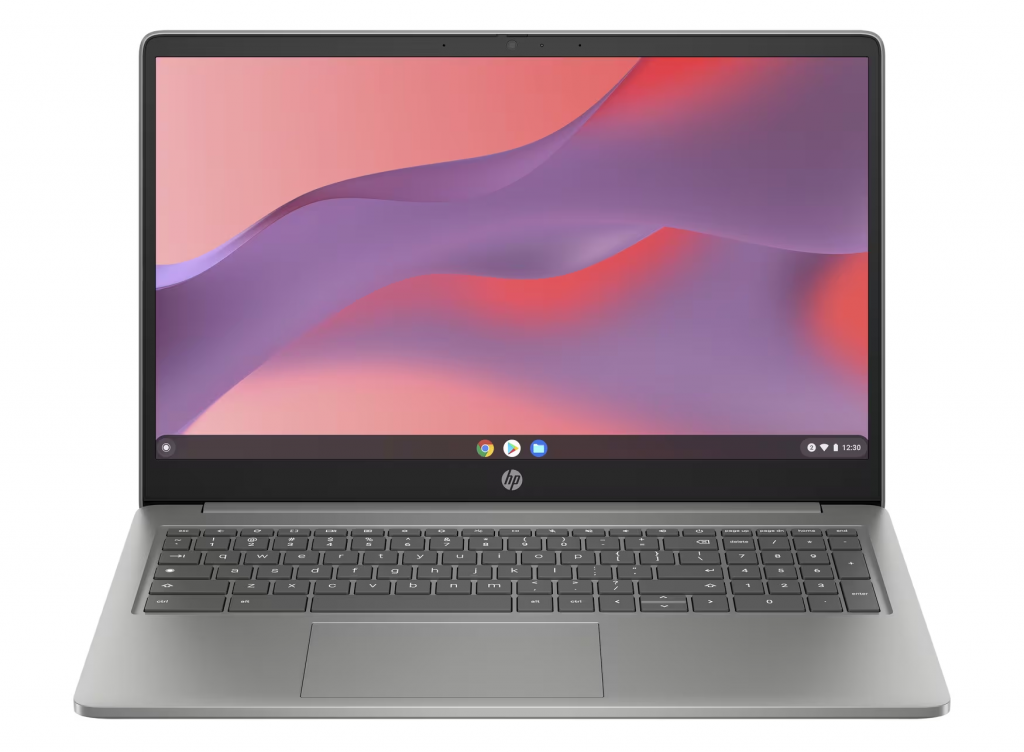
HP Chromebook Plus 15 Review: The Everyday Laptop That Thinks Bigger
The Chromebook market has matured in the last few years. Once dismissed as lightweight, internet-only machines, modern Chromebooks have quietly evolved into legitimate daily drivers: especially for students, remote workers, and anyone who lives inside a browser. Enter the HP Chromebook Plus 15 (model 15a-nb0004na), a 15.6-inch machine that sits at the sweet spot between affordability and usability. It’s not here to dethrone Windows or macOS, but rather to ask: do you really need them?
This is HP’s pitch for a no-nonsense laptop: a big screen, modern connectivity, decent performance, and the kind of versatility ChromeOS has grown into. The result is a machine that won’t thrill creatives or gamers but delivers far more than its budget roots suggest. Let’s dive in.
Design and Build: Plastic With a Purpose

At first glance, the Chromebook Plus 15 wants you to believe it belongs among premium ultrabooks. The color scheme hints at brushed metal, the bezels are reasonably slim, and the overall silhouette feels modern enough. Touch it, though, and reality sets in: this is plastic, through and through.
But here’s the thing: plastic doesn’t feel like a compromise at this price point (under £500). The chassis is sturdy, it resists flex, and while it won’t deliver the cool-to-the-touch feel of aluminum, it also doesn’t scream “cheap toy.” It’s a well-balanced compromise for a machine designed to be portable, functional, and affordable.
At 1.73kg, it’s not featherlight, but it’s still backpack-friendly. The thickness (just under 2cm) won’t win design awards, but it’s far from clunky. HP clearly aimed for durability over razor-thin elegance, and honestly, for a laptop that might bounce between coffee shops, classrooms, and dining tables, that’s the smarter move.
The Keyboard: Big Screen, Small Keys
Here’s where the Plus 15 stumbles a little. The 15.6-inch screen gave HP space to include a full numeric keypad, but it came at the expense of key size. Some keys feel cramped, Enter in particular. Expect a learning curve, and the occasional mistyped hashtag where you meant a line break.
It’s not a dealbreaker, especially if you type a lot in Google Docs or spreadsheets, but the lack of a backlit keyboard is a more noticeable omission. Night owls will need an external light source, and for a 2025 Chromebook, that feels like a corner cut too far.
On the flip side, HP added a row of shortcut keys above the F-row: screen capture, media controls, brightness toggles, that genuinely make ChromeOS navigation smoother. Once you get into the rhythm, it feels natural and convenient.
The Screen: Big, Bright Enough, and Built for Work

The 15.6-inch Full HD (1920×1080) display is one of the Chromebook’s biggest selling points. For anyone who spends hours working in multiple tabs, writing, or even watching Netflix, the extra screen real estate makes a difference. It’s not an OLED dazzler, nor is it designed for color-accurate creative work, but it’s bright and crisp enough for day-to-day use.
Think of it as “good enough” in the best way: reliable, easy on the eyes, and roomy enough to make multitasking less painful.
Connectivity and Ports: Modern and Generous

Budget laptops often skimp on ports. The HP Chromebook Plus 15 doesn’t. You get: 2x USB 3.2 Type-C (supporting DisplayPort and charging), 1x USB 3.2 Type-A, 1x 3.5mm headphone jack, and a microSD slot for storage expansion.
Add Wi-Fi 6E and Bluetooth 5.3, and you’ve got a laptop that plays nice with modern peripherals and networks. Plugging into an external monitor, docking station, or even your phone charger is painless. For students or professionals on the move, that flexibility is gold.
Performance: ChromeOS, Supercharged
Specs-wise, the Chromebook Plus 15 carries an Intel Core i3 N305 with Intel UHD graphics, backed by 8GB LPDDR5 RAM and 128GB UFS storage. That may not sound like much in a world of beefy MacBook Pros, but for ChromeOS, it’s plenty.
Daily use feels smooth: dozens of Chrome tabs, Google Workspace apps, video calls, YouTube streaming: it handles it all without stutter. It’s not built for 3D rendering, heavy Photoshop sessions, or AAA gaming, but that’s not the promise here.
Where it shines is in the simplicity of ChromeOS. Boot times are near-instant. Updates happen in the background. Security is tight. For anyone who wants a laptop that just works, without the endless maintenance of Windows or the higher buy-in of macOS, this is a strong case.
And ChromeOS has grown up: you can now install Android apps, Linux tools, and even run Adobe Photoshop (albeit a web version). Canva, Figma, Spotify, Slack, even light video editing apps: most of what today’s workflow demands is here.
Battery Life: Dependably All-Day
HP quotes up to 10–12 hours of battery life, and real-world use lands in that ballpark. With a mix of writing, browsing, and streaming, expect a full workday unplugged. For students moving between classes or professionals hopping between meetings, that’s exactly what you want: reliable endurance without battery anxiety.
USB-C charging adds flexibility: top it up with the same charger you use for your phone or tablet.
Day-to-Day Use: Where It Fits In

So who’s the HP Chromebook Plus 15 really for? Students will love the big screen for split-screen studying and the keyboard, while imperfect, beats cramped 13-inch rivals. With Google Classroom and Workspace baked in, it’s plug-and-play. Remote workers will appreciate how easily it handles email, video calls, Slack, and documents. Toss in a USB-C monitor at your desk, and you’ve got a solid workstation. Families get a secure, shared machine that handles Netflix, online shopping, homework, and calls with relatives without fuss. And casual users who just want a laptop for browsing, banking, and binge-watching will find this more than enough.
It’s less ideal for creatives who need pro-grade software or gamers chasing high FPS. Cloud gaming is the only real option here.
Price and Value
At under £500, the Chromebook Plus 15 feels like a steal for the hardware. You’re getting a full-size laptop with modern connectivity, solid performance, and excellent battery life for the price of a midrange tablet.
Sure, compromises exist: the plastic build, cramped keys, and ChromeOS limitations. But in the right hands, those don’t feel like dealbreakers, they feel like the trade-offs that let HP keep the price accessible.
The ChromeOS Factor: Why It Matters More in 2025
Here’s the elephant in the room: why choose ChromeOS in 2025, when Windows laptops are everywhere? Because ChromeOS has quietly become a serious contender. With web apps evolving into near-desktop experiences (think Photoshop, Canva, Google Workspace), Android apps expanding versatility, and Linux support for developers, it’s no longer a toy OS.
For users who don’t need Windows’ complexity, or its baggage, ChromeOS is refreshingly lightweight, fast, and secure. The HP Chromebook Plus 15 is proof that you don’t need to spend over a grand to get a laptop that feels modern, responsive, and capable.
Verdict: A Chromebook That Knows Its Audience
The HP Chromebook Plus 15 isn’t pretending to be something it’s not. It’s not here to lure video editors away from MacBooks or replace your gaming rig. Instead, it’s a thoughtful, budget-friendly machine that nails the essentials: performance, battery, connectivity, and usability.
For students, families, and remote workers, it’s a confident daily driver that asks the question: do you really need Windows? For many, the honest answer might just be no.
Buy it if you want a reliable, affordable laptop for everyday tasks with a big screen and modern features. Skip it if you need pro-grade creative tools, high-end design, or serious gaming performance.







